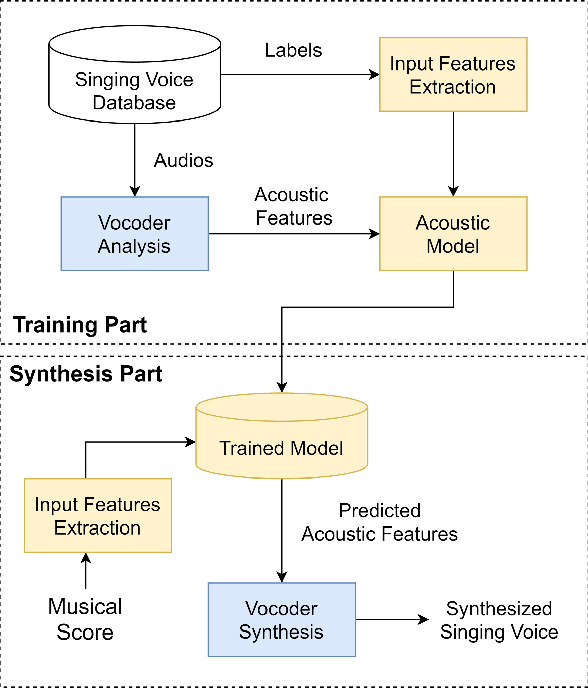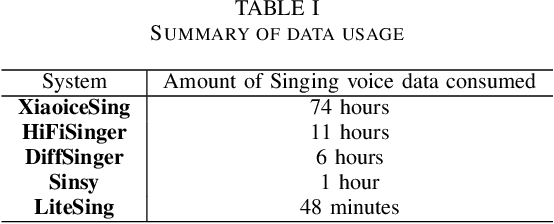Yung-Chuan Chang
Effects of Convolutional Autoencoder Bottleneck Width on StarGAN-based Singing Technique Conversion
Aug 19, 2023Abstract:Singing technique conversion (STC) refers to the task of converting from one voice technique to another while leaving the original singer identity, melody, and linguistic components intact. Previous STC studies, as well as singing voice conversion research in general, have utilized convolutional autoencoders (CAEs) for conversion, but how the bottleneck width of the CAE affects the synthesis quality has not been thoroughly evaluated. To this end, we constructed a GAN-based multi-domain STC system which took advantage of the WORLD vocoder representation and the CAE architecture. We varied the bottleneck width of the CAE, and evaluated the conversion results subjectively. The model was trained on a Mandarin dataset which features four singers and four singing techniques: the chest voice, the falsetto, the raspy voice, and the whistle voice. The results show that a wider bottleneck corresponds to better articulation clarity but does not necessarily lead to higher likeness to the target technique. Among the four techniques, we also found that the whistle voice is the easiest target for conversion, while the other three techniques as a source produce more convincing conversion results than the whistle.
A Survey on Recent Deep Learning-driven Singing Voice Synthesis Systems
Oct 06, 2021

Abstract:Singing voice synthesis (SVS) is a task that aims to generate audio signals according to musical scores and lyrics. With its multifaceted nature concerning music and language, producing singing voices indistinguishable from that of human singers has always remained an unfulfilled pursuit. Nonetheless, the advancements of deep learning techniques have brought about a substantial leap in the quality and naturalness of synthesized singing voice. This paper aims to review some of the state-of-the-art deep learning-driven SVS systems. We intend to summarize their deployed model architectures and identify the strengths and limitations for each of the introduced systems. Thereby, we picture the recent advancement trajectory of this field and conclude the challenges left to be resolved both in commercial applications and academic research.
 Add to Chrome
Add to Chrome Add to Firefox
Add to Firefox Add to Edge
Add to Edge